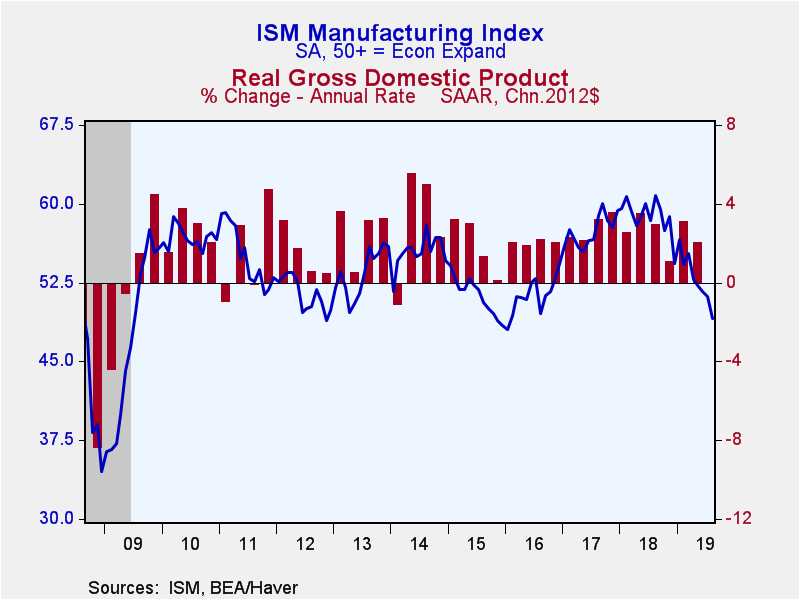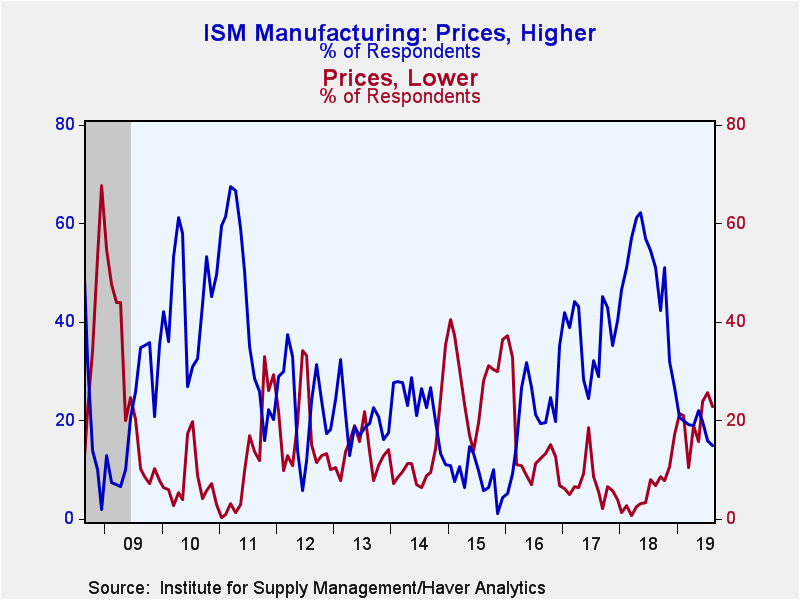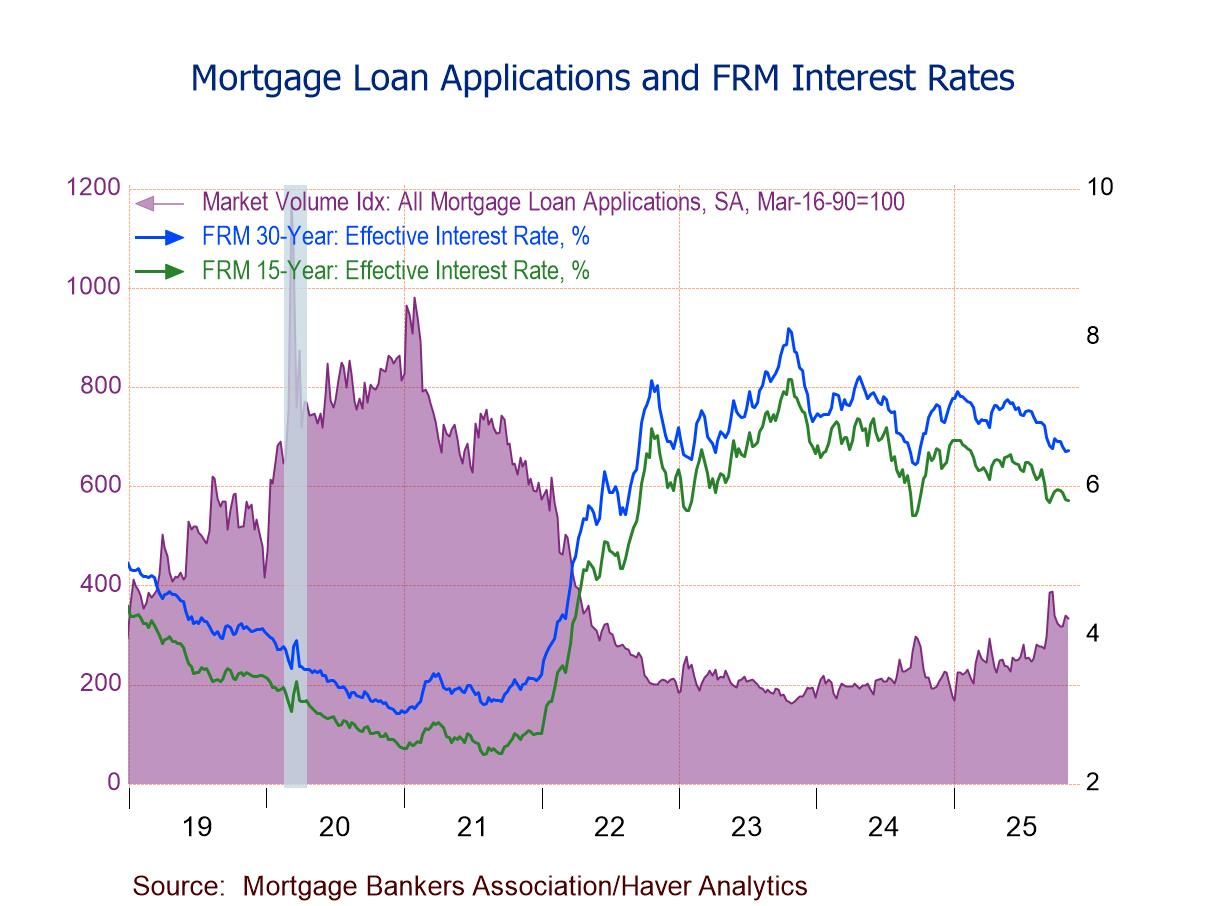 Global| Sep 03 2019
Global| Sep 03 2019ISM Factory Activity Weakens As Exports Collapse
by:Tom Moeller
|in:Economy in Brief
Summary
Activity in the manufacturing is declining. The ISM manufacturing index fell to 49.1 during August from 51.2 in July. It was the lowest level since January 2016 and was below the expansion peak of 60.8 last August. The Action [...]
Activity in the manufacturing is declining. The ISM manufacturing index fell to 49.1 during August from 51.2 in July. It was the lowest level since January 2016 and was below the expansion peak of 60.8 last August. The Action Economics Forecast Survey anticipated a reading of 51.3. Since 2008, there has been a 74% correlation between the index level and quarterly growth in real GDP.
The separate export index weakened to 43.3 last month from 48.1 in July. It was down from the expansion high of 62.8 reached in February of last year and was the lowest reading since June 2009. Below the break-even point of 50, the figure indicated contraction in foreign trade.
Performance amongst the ISM index components was mostly negative last month. The overall new orders index fell sharply to 47.2, the lowest level since June 2012. The production series declined to 49.5 indicating lessened production, on balance, for the first time in three years. The supplier delivery index fell to 51.4. That reflected slightly quicker delivery speeds versus last month, but a sharp acceleration since the middle of last year.
Also moving lower was the employment index to 47.4, indicating net-contraction in payroll levels for the first time in roughly three years. A greatly lessened 15% (NSA) of respondents reported increased payrolls while a sharply higher 19% reported a decline. Since 2008, there has been an 84% correlation between the employment index and the m/m change in factory sector payrolls.
The prices paid series, which is not part of the composite series, improved slightly m/m to 46.0, but indicated price deflation for the fifth month this year. It remained below the high of 79.5 in May of 2018. A lessened 15% of respondents reported increased prices while 23% reported them lower.
Amongst other series in the ISM survey, the order backlog measure notched up to 46.3, but still indicated a rapid decline in unfilled orders. The imports index fell to 46.0, the lowest level since December 2015.
The ISM figures are diffusion indexes where a reading above 50 indicates expansion. The figures from the Institute for Supply Management can be found in Haver's USECON database; further detail is found in the SURVEYS database. Commodity prices can be found in USECON as well as the CMDTY database. The expectations number is available in Haver's AS1REPNA database.
| ISM Mfg (SA) | Aug | Jul | Jun | Aug'18 | 2018 | 2017 | 2016 |
|---|---|---|---|---|---|---|---|
| Headline Index | 49.1 | 51.2 | 51.7 | 60.8 | 58.8 | 57.4 | 51.3 |
| New Orders | 47.2 | 50.8 | 50.0 | 64.5 | 61.4 | 62.2 | 54.5 |
| Production | 49.5 | 50.8 | 54.1 | 62.4 | 60.7 | 60.9 | 53.8 |
| Employment | 47.4 | 51.7 | 54.5 | 57.8 | 56.9 | 56.8 | 49.1 |
| Supplier Deliveries | 51.4 | 53.3 | 50.7 | 63.9 | 62.0 | 56.8 | 51.8 |
| Inventories | 49.9 | 49.5 | 49.1 | 55.4 | 52.9 | 50.4 | 47.5 |
| Prices Paid Index (NSA) | 46.0 | 45.1 | 47.9 | 72.1 | 71.7 | 65.0 | 53.1 |
Tom Moeller
AuthorMore in Author Profile »Prior to joining Haver Analytics in 2000, Mr. Moeller worked as the Economist at Chancellor Capital Management from 1985 to 1999. There, he developed comprehensive economic forecasts and interpreted economic data for equity and fixed income portfolio managers. Also at Chancellor, Mr. Moeller worked as an equity analyst and was responsible for researching and rating companies in the economically sensitive automobile and housing industries for investment in Chancellor’s equity portfolio. Prior to joining Chancellor, Mr. Moeller was an Economist at Citibank from 1979 to 1984. He also analyzed pricing behavior in the metals industry for the Council on Wage and Price Stability in Washington, D.C. In 1999, Mr. Moeller received the award for most accurate forecast from the Forecasters' Club of New York. From 1990 to 1992 he was President of the New York Association for Business Economists. Mr. Moeller earned an M.B.A. in Finance from Fordham University, where he graduated in 1987. He holds a Bachelor of Arts in Economics from George Washington University.










